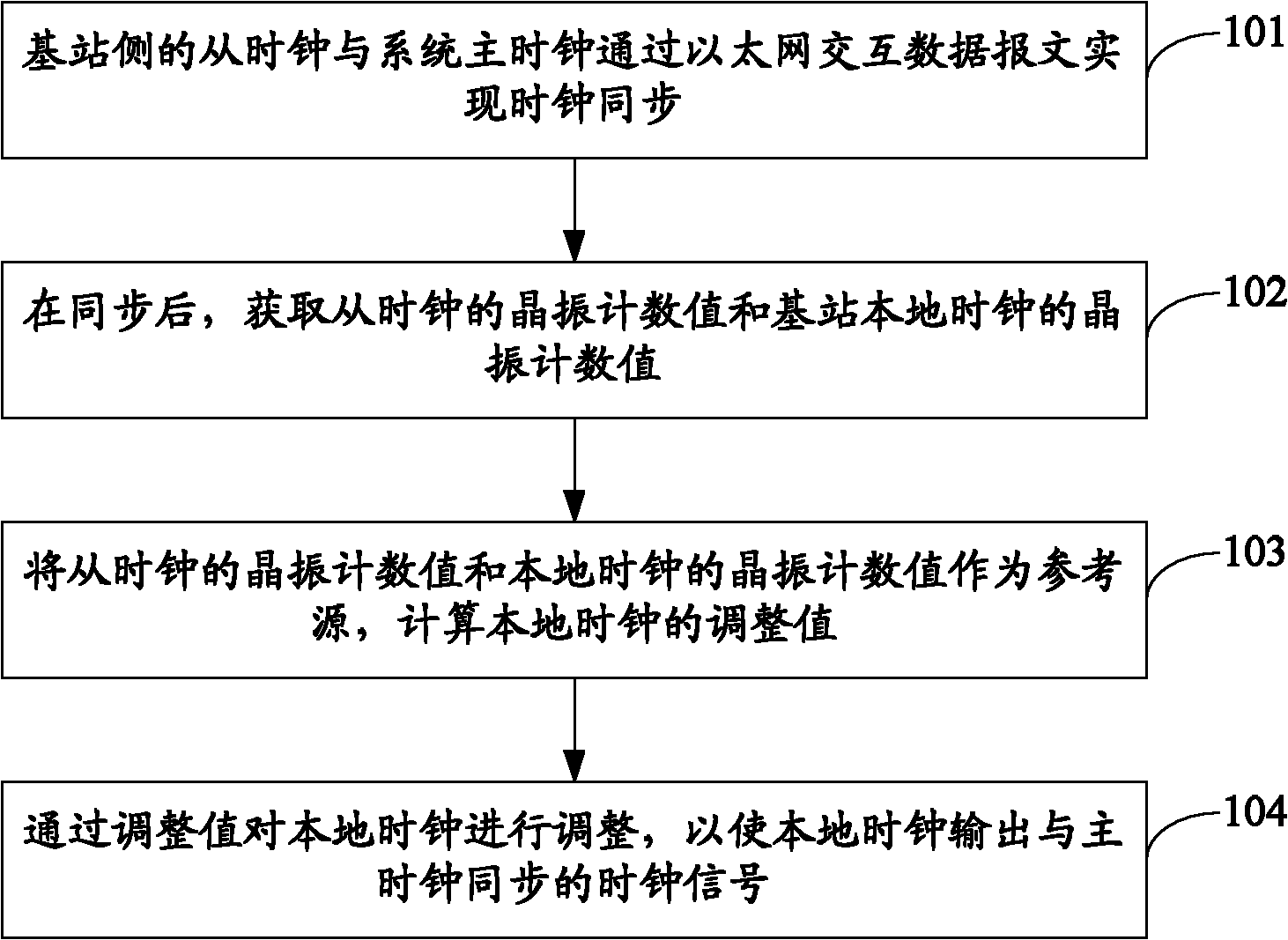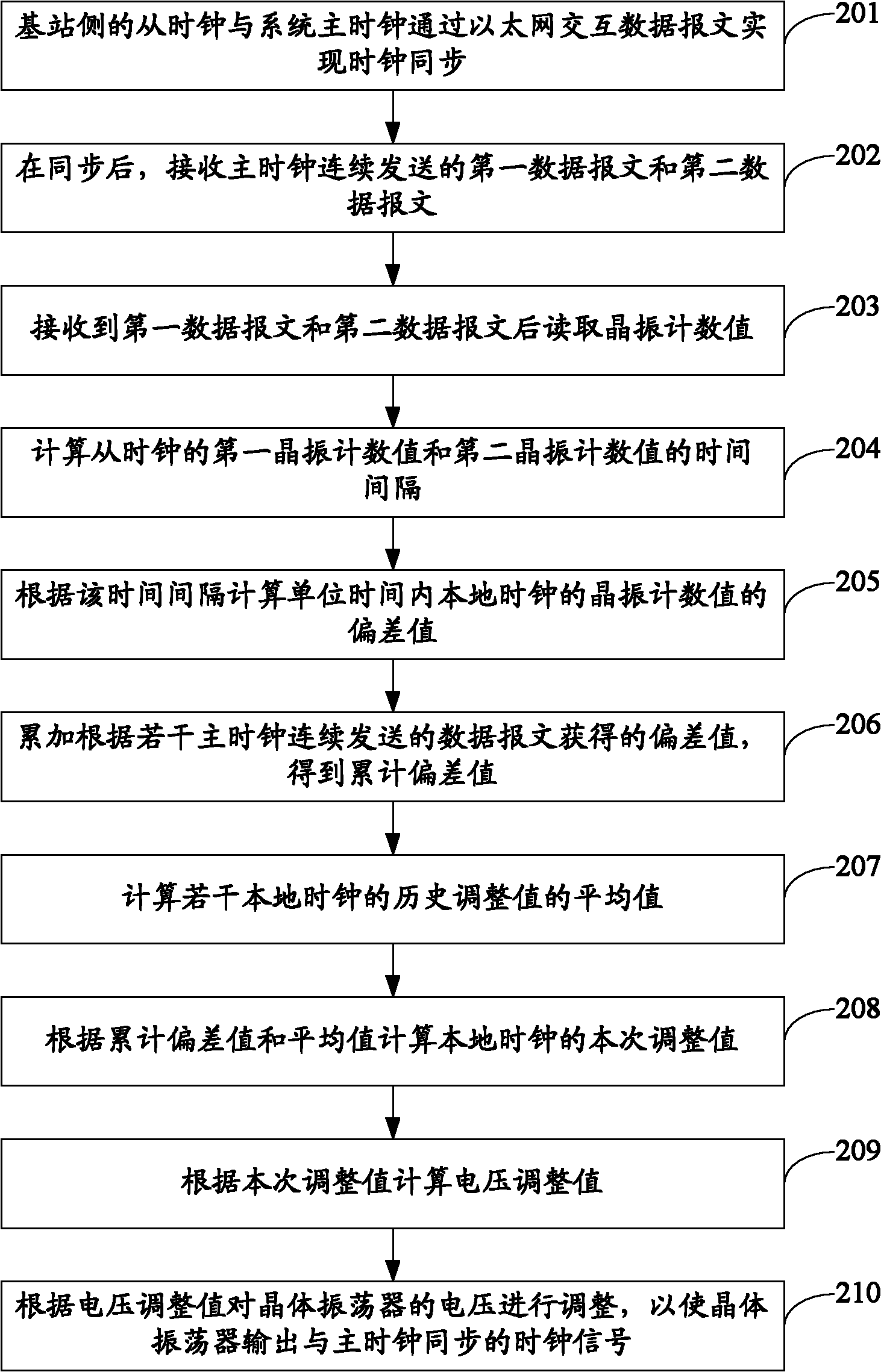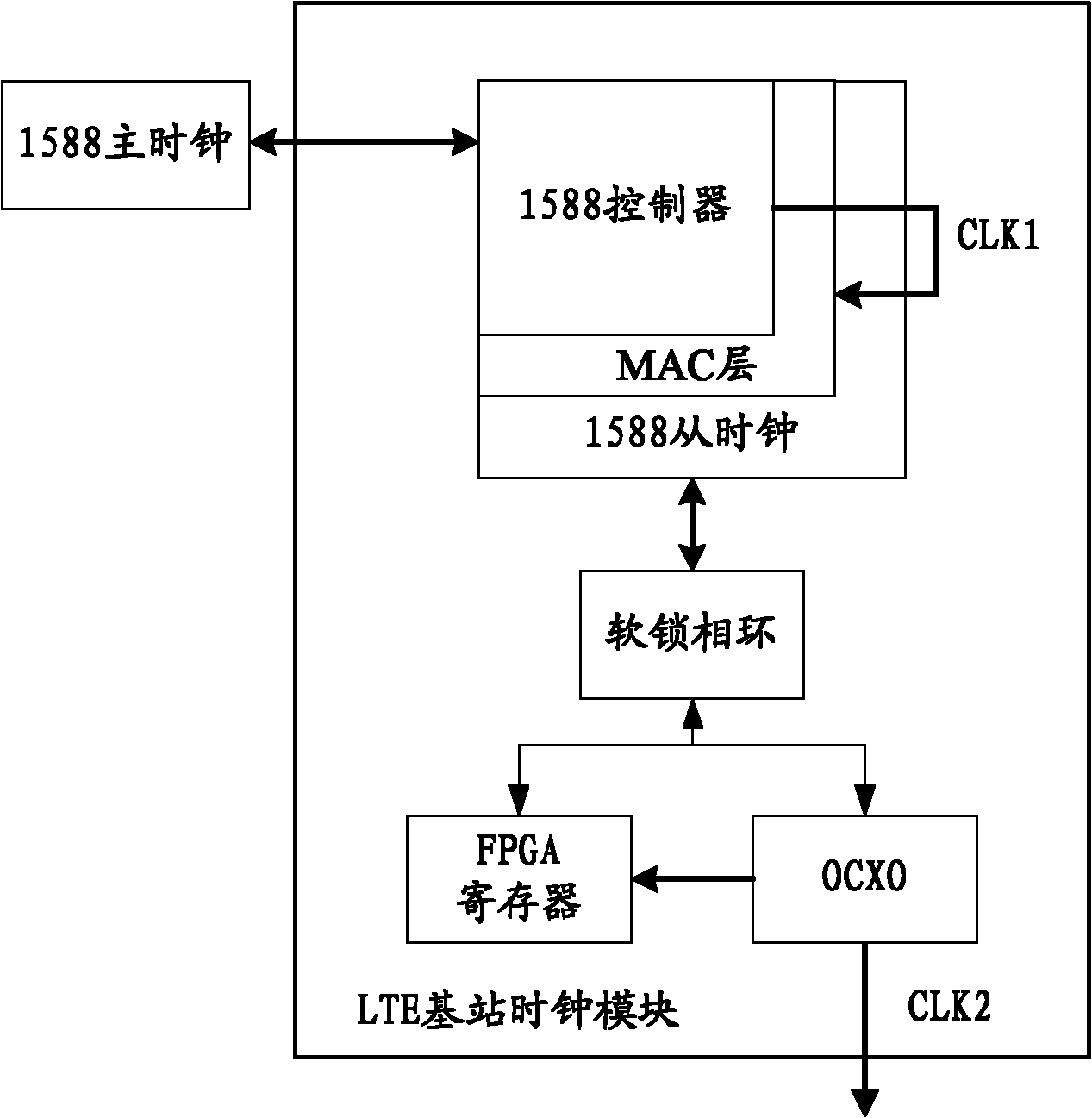Clock synchronization method and device thereof as well as base station clock device
A clock synchronization and clock technology, which is applied in the field of communication, can solve the problems that the local clock cannot obtain reliable clock source signals, difficult master clock synchronization, etc.
- Summary
- Abstract
- Description
- Claims
- Application Information
AI Technical Summary
Problems solved by technology
Method used
Image
Examples
no. 1 example
[0054] see figure 1 , which is the flow chart of the first embodiment of the clock synchronization method of the present application:
[0055] Step 101: the slave clock at the base station side and the system master clock exchange data packets through Ethernet to realize clock synchronization.
[0056]Step 102: after synchronization, obtain the crystal oscillator count value of the slave clock and the crystal oscillator count value of the local clock of the base station.
[0057] Specifically, the first data message and the second data message continuously sent by the master clock are received, and when the first data message is received, the first crystal oscillator count value of the slave clock and the first crystal oscillator of the local clock are read The count value, and when the second data message is received, read the second crystal oscillator count value of the slave clock and the second crystal oscillator count value of the local clock from the second data message...
no. 2 example
[0062] see figure 2 , which is the flow chart of the second embodiment of the clock synchronization method of the present application:
[0063] Step 201: the slave clock at the base station side and the system master clock exchange data packets through Ethernet to realize clock synchronization.
[0064] Among them, when the system master clock sends a Sync message to the slave clock, the slave clock obtains the sending time stamp TM1 and receiving time stamp TS1 of the Sync message from the Sync message; the slave clock sends the Delay_Req message to the master clock , obtain the sending time stamp TS2 and receiving time stamp TM2 of the Delay_Req message from the clock
[0065] The slave clock uses the time stamps obtained when receiving and sending messages to perform the following calculations:
[0066] Delay=((TS1-TM1)+(TS2-TM2))÷2;
[0067] Offset=TS1-TM1-Delay;
[0068] In the above formula, Delay is the transmission delay, and Offset is the time error. According to...
PUM
 Login to View More
Login to View More Abstract
Description
Claims
Application Information
 Login to View More
Login to View More - R&D
- Intellectual Property
- Life Sciences
- Materials
- Tech Scout
- Unparalleled Data Quality
- Higher Quality Content
- 60% Fewer Hallucinations
Browse by: Latest US Patents, China's latest patents, Technical Efficacy Thesaurus, Application Domain, Technology Topic, Popular Technical Reports.
© 2025 PatSnap. All rights reserved.Legal|Privacy policy|Modern Slavery Act Transparency Statement|Sitemap|About US| Contact US: help@patsnap.com



